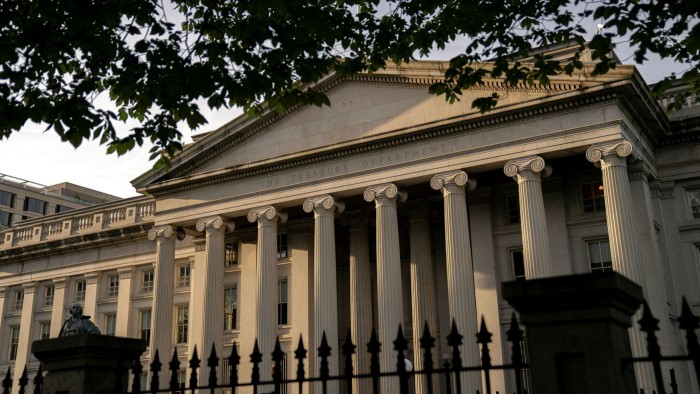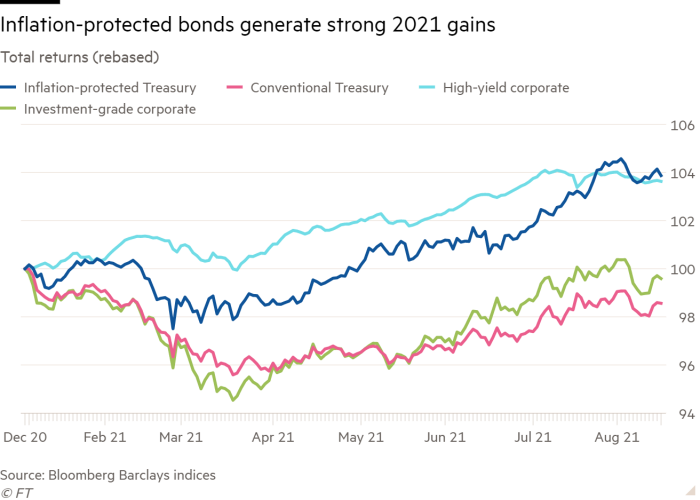Inflation-protected Treasuries charge higher to lead US bond market

Roula Khalaf, Editor of the FT, selects her favourite stories in this weekly newsletter.
Investors worried about rising prices for everything from consumer goods to raw materials have poured into inflation-protected American government debt, propelling its returns above other major types of US bonds this year.
While anxieties over a burst of inflation have buffeted the $22tn Treasury market — resulting in big losses during the first quarter before a partial rebound — Treasury inflation-protected securities, known as Tips, have been a winning bet.
Tips, which are government bonds that compensate investors for rising prices, have generated returns including interest payments of 3.9 per cent in 2021, according to a Barclays index that tracks the Tips market.
That performance contrasts with losses for conventional Treasuries and high-grade corporate bonds, and has outshone riskier assets typically associated with juicier returns such as junk bonds, which have returned 3.6 per cent.
“It has been a very solid position for us,” said Sonal Desai, chief investment officer for fixed income at Franklin Templeton, which has favoured Tips in its portfolios this year relative to their weight in bond benchmarks.

Tip funds have garnered inflows for 38-straight weeks, according to EPFR data collated by Bank of America, as US inflation has risen to its highest level in more than a decade. Booming demand from the reopening of the world’s largest economy has met with supply disruptions in markets from lumber to used cars, driving inflation higher.
The Federal Reserve has argued that current levels of inflation will be “transitory”, and will fade as supply and demand jams are resolved, and workers return to the labour force, reducing pressure on wages. But while growth in consumer prices slowed in July to an annual pace of 5.4 per cent, traders and investors are questioning how long price growth will hold at elevated levels.
“As we head into the end of the year, the challenge is, how much of that . . . pent-up demand persists? What goes beyond just transitory, and how does the market perceive what policymakers’ reaction to that will be?” said Steve Rodosky, a managing director and portfolio manager at Pimco.
Desai said price gains for Tips may slow given their big advance so far this year but expected inflation to remain more than double the Fed’s average 2 per cent target for the remainder of 2021, as some supply bottlenecks persist.
“I would consider it reckless to assume we will magically come back down to very low month-on-month prints,” she said.
Surging Tips prices have also pushed yields on the bonds — which represent the returns investors can expect once inflation is stripped out — to all-time lows.
The yield on the five-year Tips is currently at minus 1.83 per cent, just off the all-time low hit earlier in August of minus 1.98 per cent. The gap between the current Tips rate and the conventional five-year Treasury yield serves as a gauge of investors’ inflation expectations over the next half decade, and currently stands at 2.59 per cent, up from 2.0 per cent at the start of the year.
Unhedged — Markets, finance and strong opinion
Robert Armstrong dissects the most important market trends and discusses how Wall Street’s best minds respond to them. Sign up here to get the newsletter sent straight to your inbox every weekday
Comments